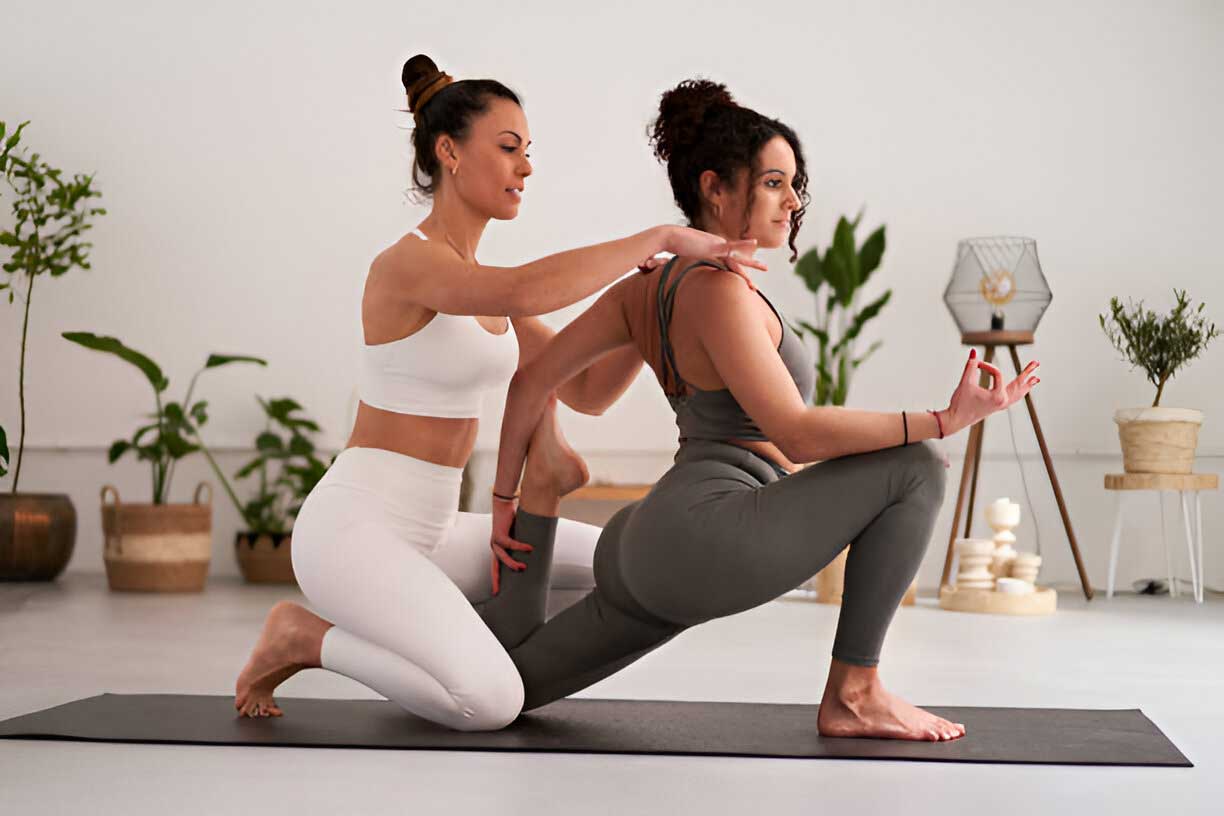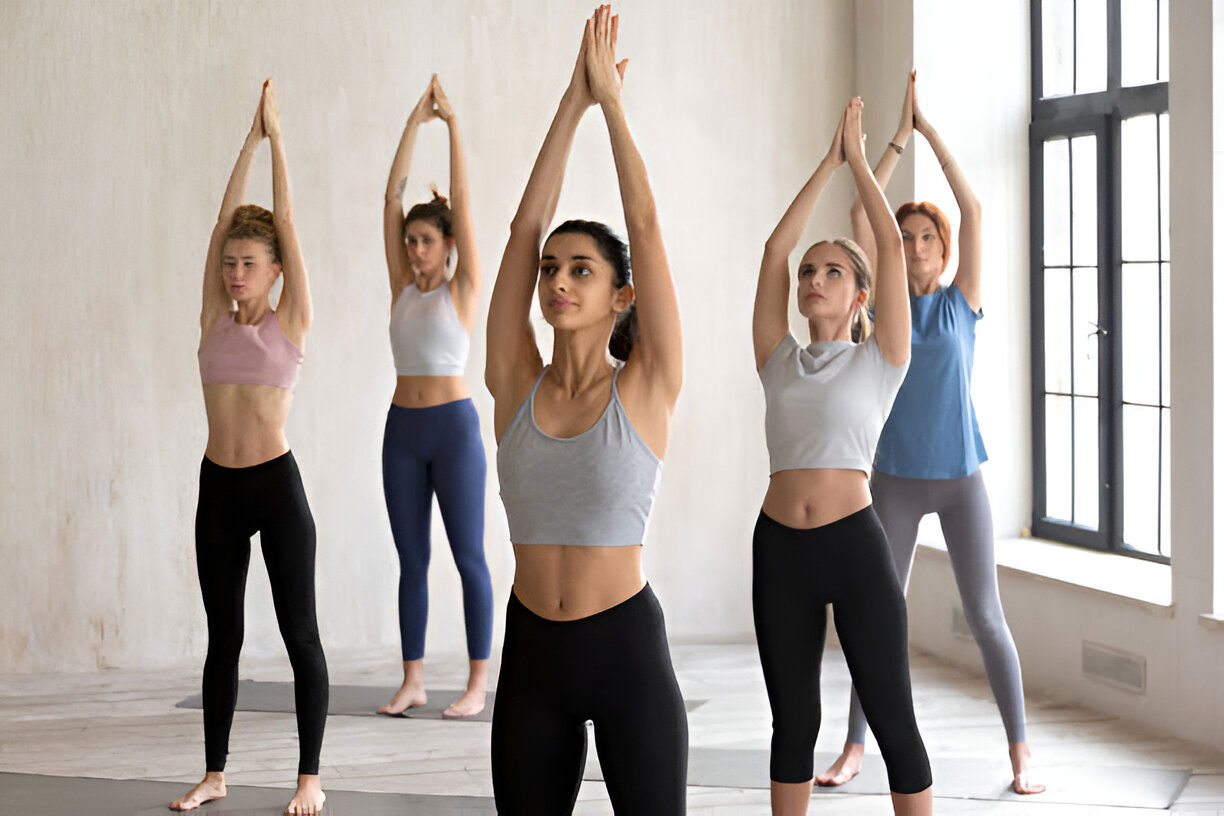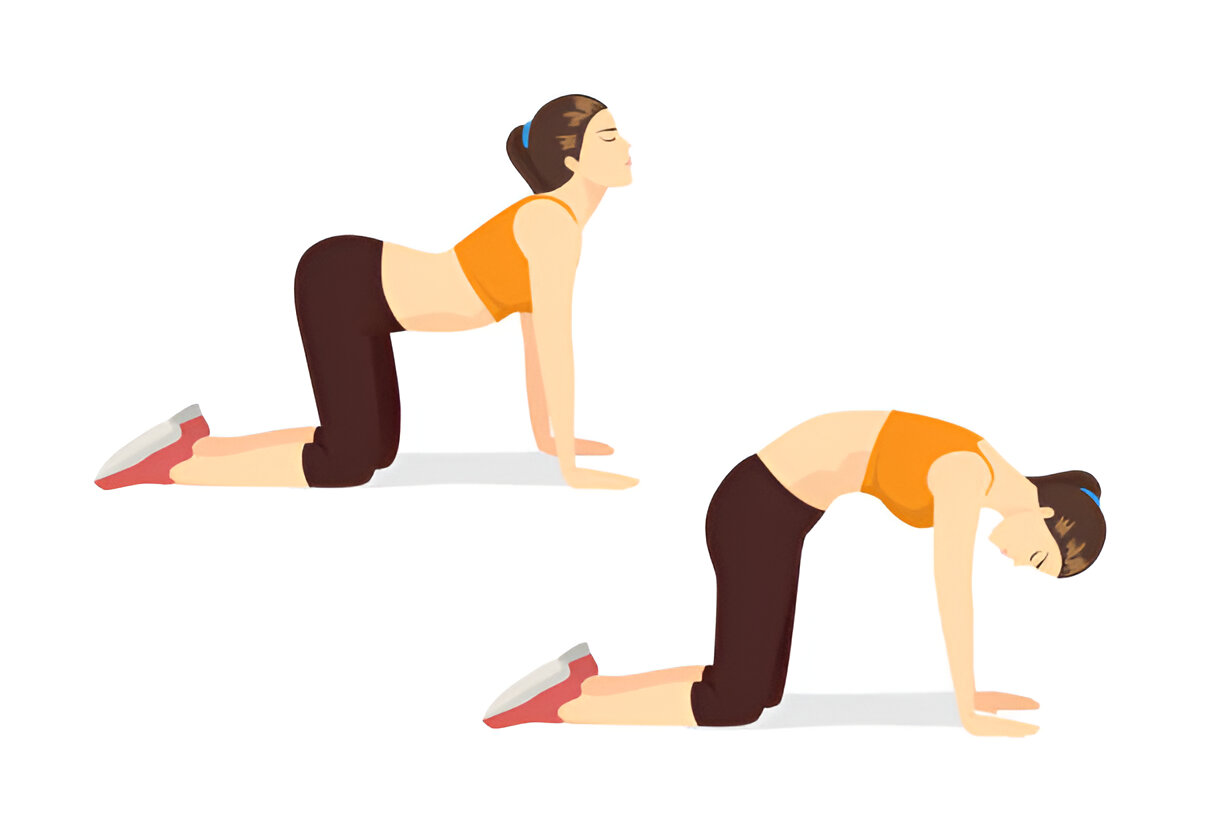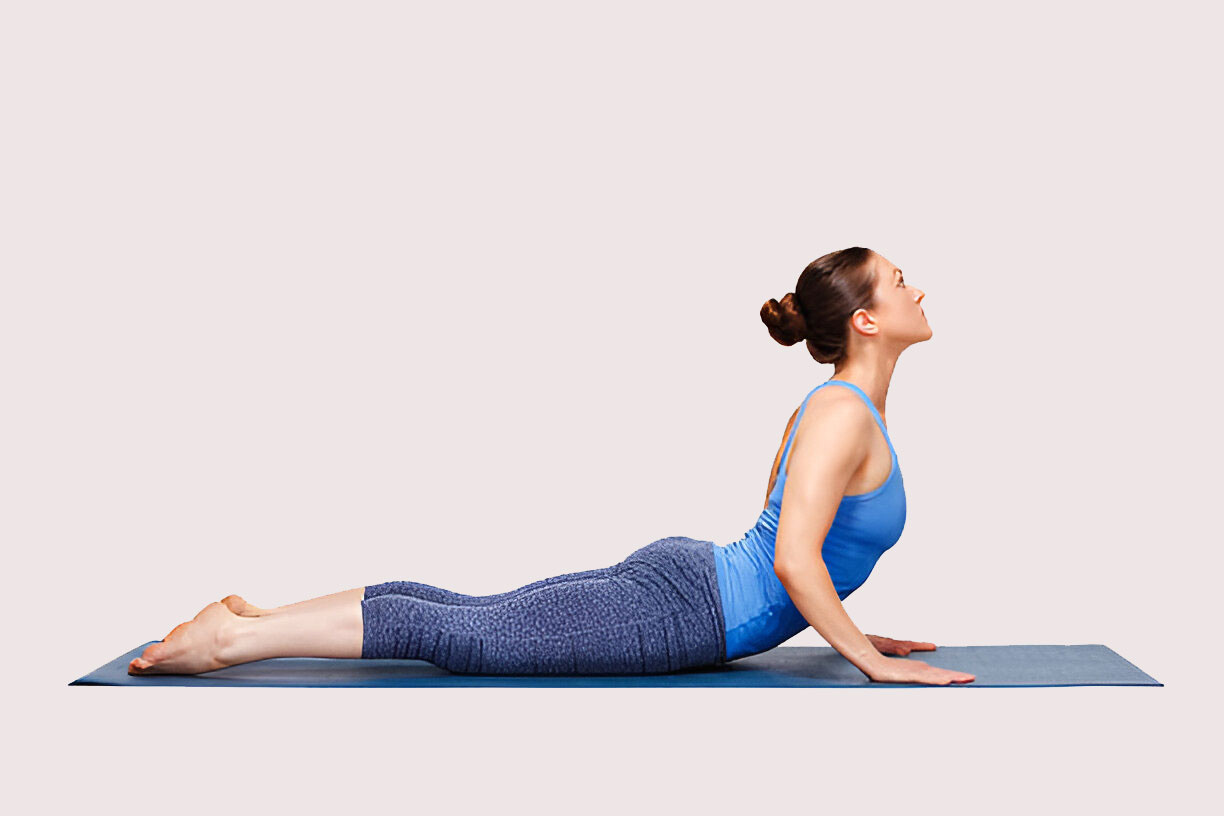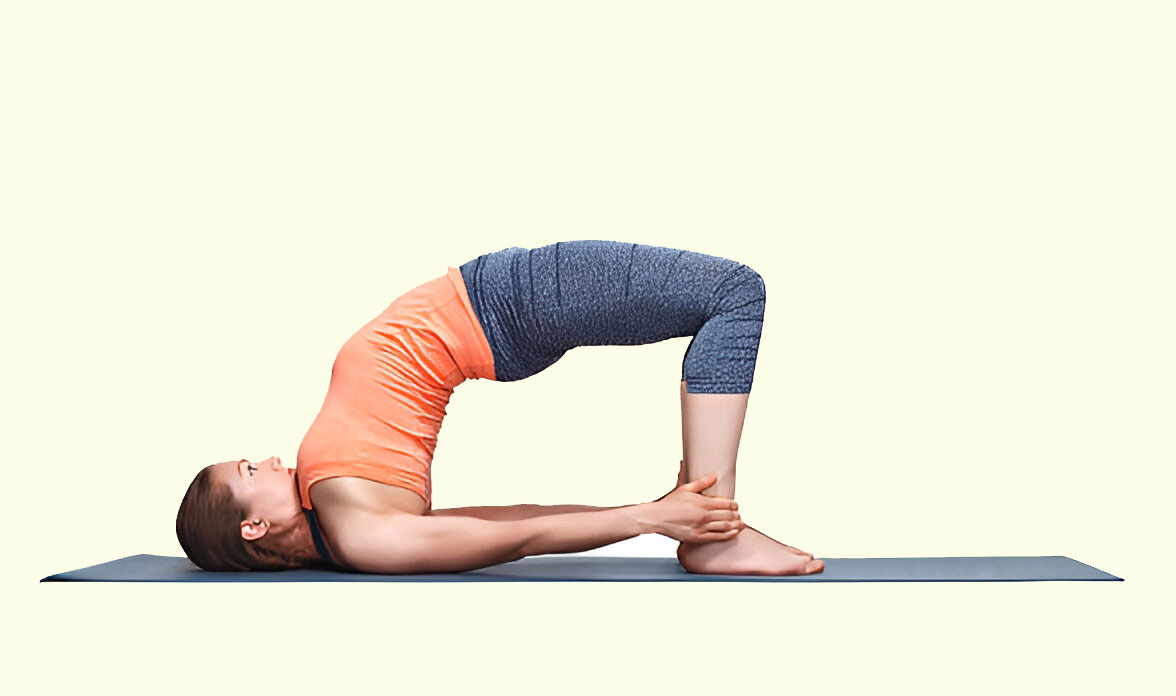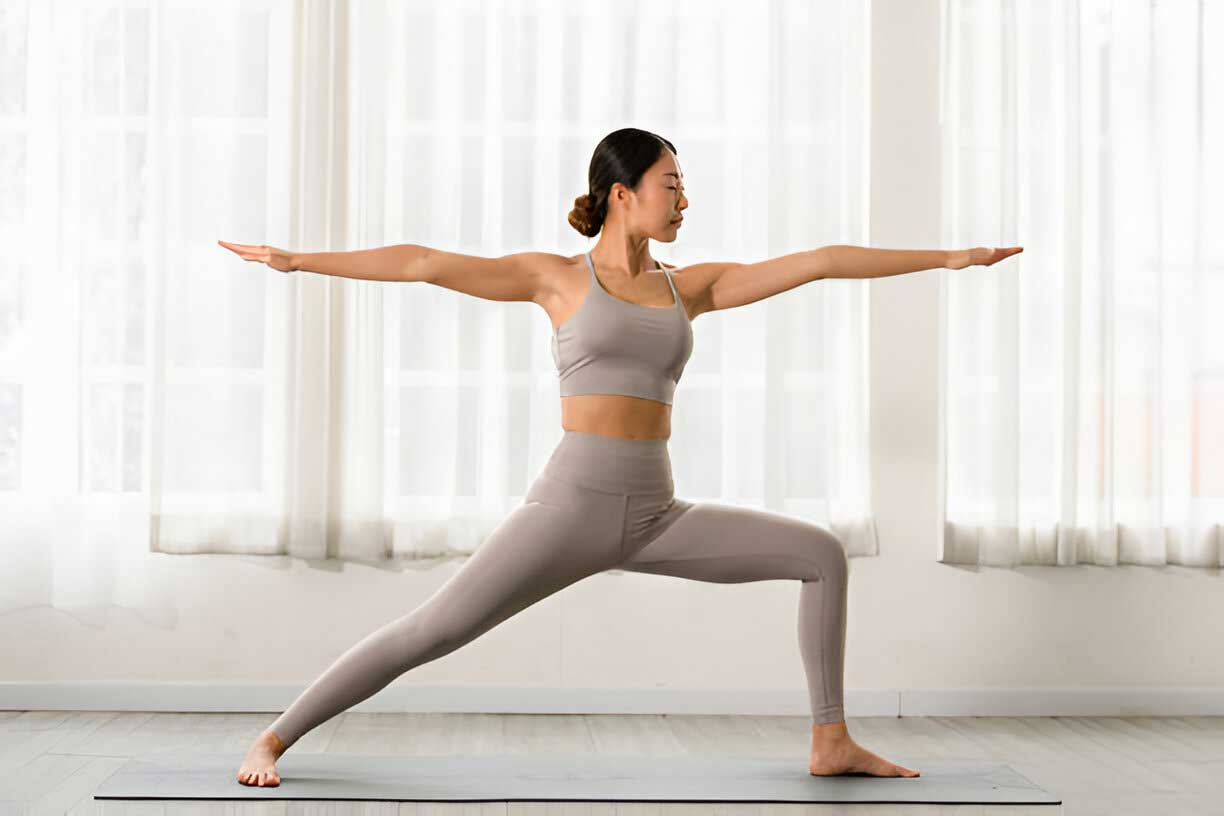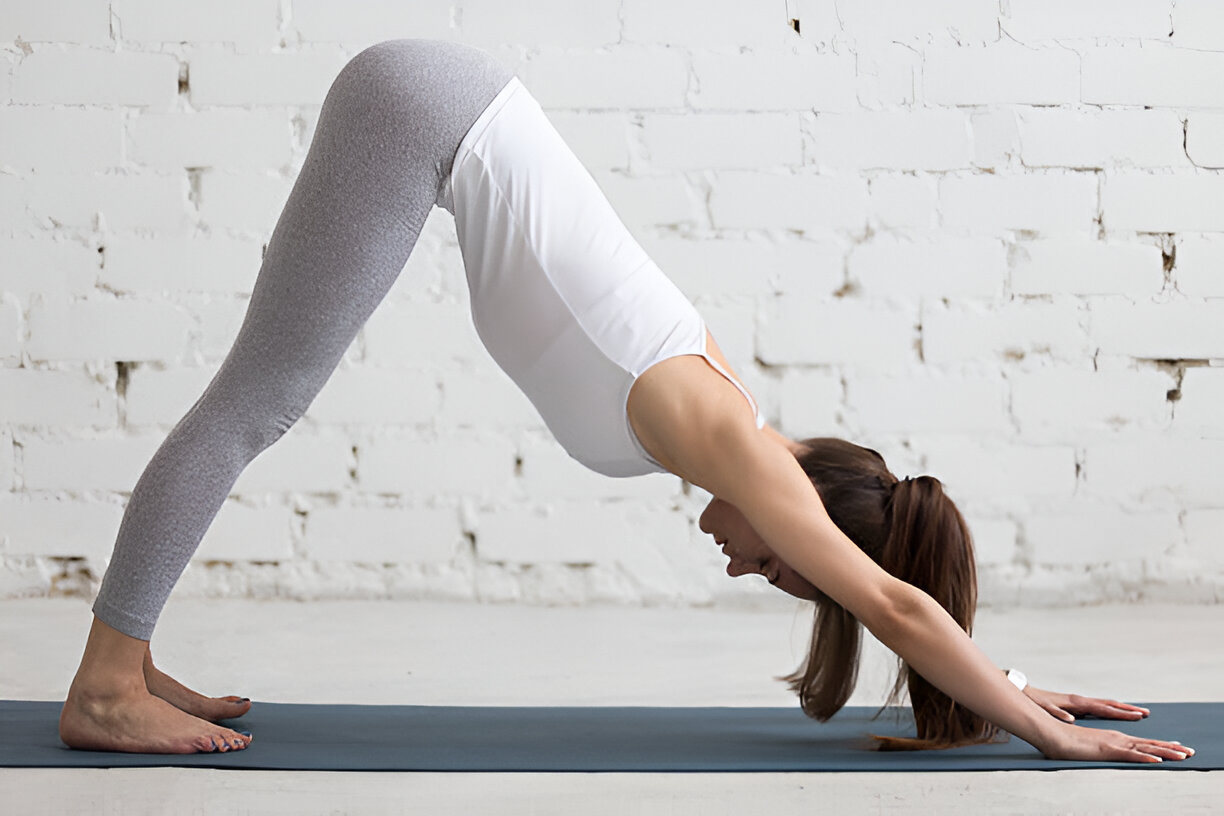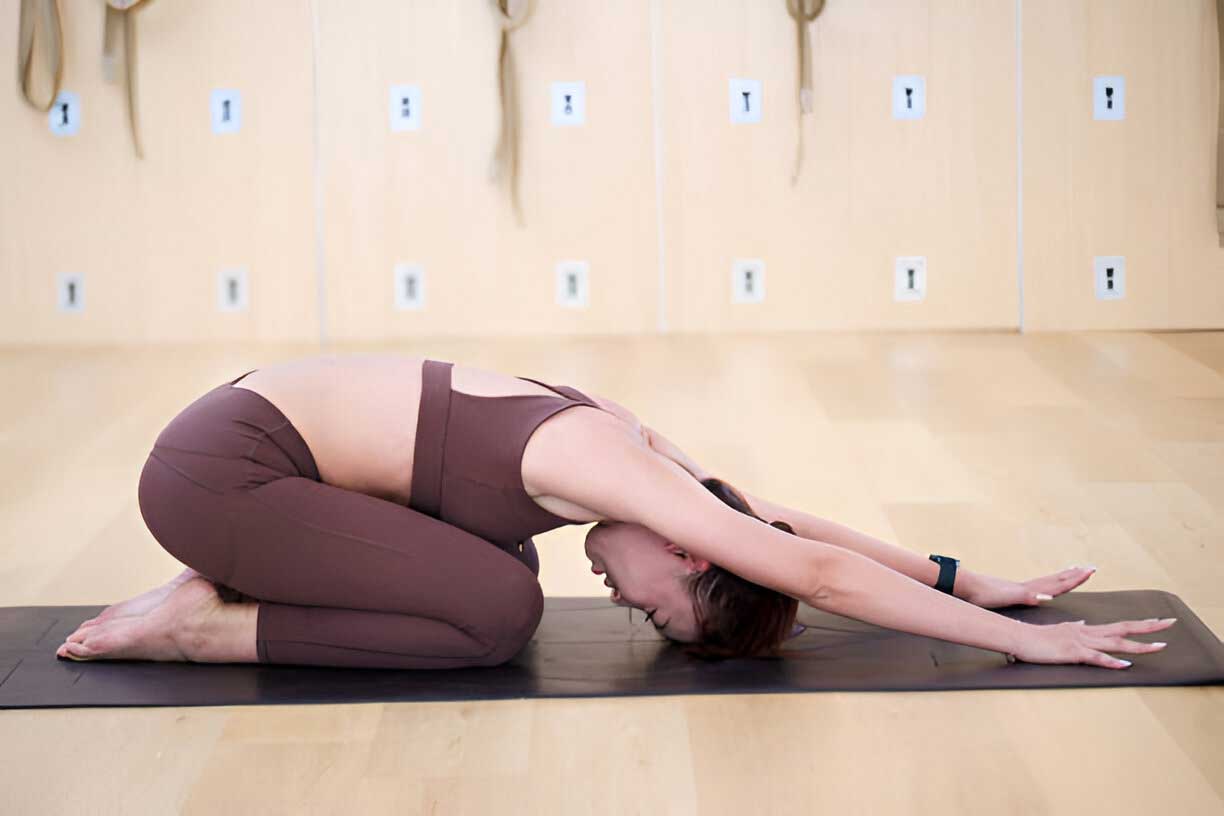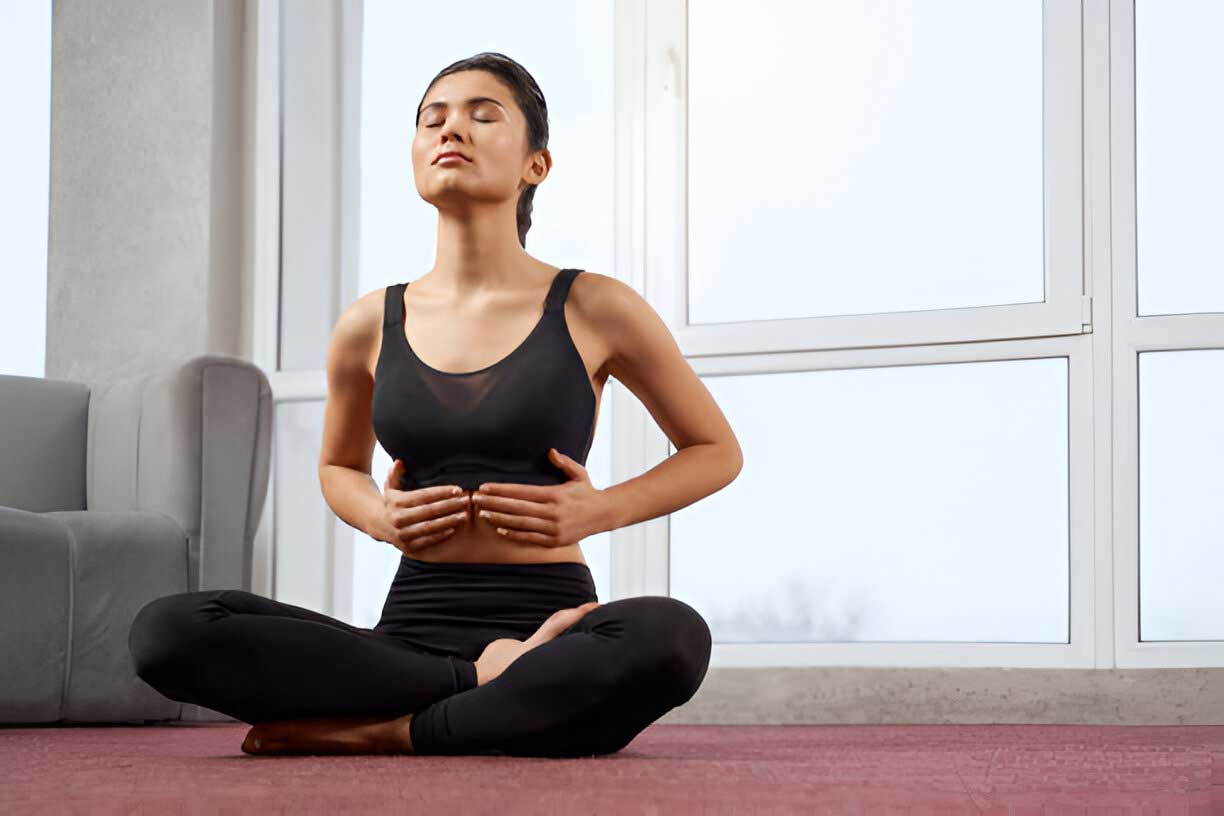How Yoga for Posture Correction Can Transform Your Alignment and Well-Being
Introduction
In today’s modern world, poor posture has become increasingly common due to sedentary lifestyles, prolonged sitting, and the constant use of technology. Slouching, hunching over screens, and improper ergonomics can lead to a host of physical issues, including back pain, neck strain, and reduced flexibility. Fortunately, yoga offers a natural and effective solution. Yoga for posture correction can help you realign your body, strengthen core muscles, and improve overall well-being.
Yoga isn’t just about flexibility; it’s a holistic practice that integrates physical postures, breathing exercises, and mindfulness to promote better posture. By incorporating specific yoga poses into your routine, you can counteract the effects of poor posture, enhance your alignment, and prevent future discomfort.
Understanding the Importance of Good Posture
Good posture is more than just standing up straight. It involves proper alignment of the spine, shoulders, and hips, allowing the body to function optimally. Poor posture can lead to a range of health issues, including:
- Back and Neck Pain: Slouching or hunching over can strain the muscles and ligaments in the back and neck, leading to chronic pain.
- Reduced Lung Capacity: Poor posture can compress the chest, limiting the lungs’ ability to expand fully, which can affect breathing.
- Digestive Issues: Slumping can compress the digestive organs, leading to issues like acid reflux or constipation.
- Decreased Mobility: Over time, poor posture can reduce flexibility and mobility, making it difficult to perform everyday tasks.
- Impaired Circulation: Poor alignment can restrict blood flow, leading to fatigue and other circulatory problems.
Correcting posture is essential for maintaining overall health and well-being. Yoga for posture correction helps address these issues by strengthening the muscles that support good posture and promoting better alignment.
How Yoga Helps with Posture Correction
Yoga for posture correction works on multiple levels. It targets the muscles and joints, promoting flexibility, strength, and balance. Here’s how yoga can help:
- Strengthens Core Muscles: A strong core supports the spine, helping to maintain proper alignment and prevent slouching.
- Improves Flexibility: Yoga stretches tight muscles, particularly in the chest, shoulders, and hips, allowing for better posture.
- Enhances Body Awareness: Yoga encourages mindfulness, helping you become more aware of your posture and making it easier to correct it.
- Promotes Spinal Alignment: Many yoga poses focus on aligning the spine, which is key to maintaining good posture.
- Balances Muscle Imbalances: Yoga helps correct muscle imbalances caused by repetitive activities or poor habits, which can contribute to poor posture.
- Reduces Stress: Stress can lead to muscle tension and poor posture. Yoga’s focus on relaxation and deep breathing helps reduce stress and its impact on posture.
Best Yoga Poses for Posture Correction
Incorporating specific yoga poses into your routine can significantly improve your posture. These poses are designed to strengthen the core, open the chest, and promote proper spinal alignment.
1. Mountain Pose (Tadasana)
Mountain Pose is a foundational yoga pose that teaches proper alignment and posture. It helps strengthen the legs, core, and back while promoting balance.
- How to do it: Stand with your feet hip-width apart, arms at your sides. Engage your thighs, lift your chest, and draw your shoulder blades down your back. Keep your chin parallel to the floor and focus on your breath.
2. Cat-Cow Pose (Marjaryasana-Bitilasana)
The Cat-Cow Pose is a gentle flow between two poses that stretch and warm up the spine. It helps improve flexibility and spinal alignment.
- How to do it: Start on your hands and knees. Inhale as you arch your back (Cow Pose), and exhale as you round your back (Cat Pose). Repeat the flow several times, coordinating your breath with the movement.
3. Cobra Pose (Bhujangasana)
Cobra Pose is a gentle backbend that strengthens the lower back muscles and opens the chest. It’s beneficial for counteracting the effects of slouching and improving spinal alignment.
- How to do it: Lie on your stomach with your hands under your shoulders. Inhale as you gently lift your chest off the floor, keeping your elbows slightly bent. Press your hips into the mat and hold the pose for several breaths.
4. Bridge Pose (Setu Bandhasana)
Bridge Pose strengthens the lower back and glutes while stretching the chest, neck, and spine. It helps improve posture by promoting spinal alignment and opening the chest.
- How to do it: Lie on your back with your knees bent and feet hip-width apart. Press your feet into the floor and lift your hips toward the ceiling. Hold the pose for several breaths, then slowly lower your hips back to the floor.
5. Warrior II Pose (Virabhadrasana II)
Warrior II Pose strengthens the legs, core, and shoulders while improving balance and body awareness. It helps build the strength needed to maintain good posture.
- How to do it: Stand with your feet wide apart. Turn your right foot out and bend your right knee, keeping your left leg straight. Extend your arms out to the sides and gaze over your right hand. Hold the pose for several breaths, then repeat on the other side.
6. Downward-Facing Dog (Adho Mukha Svanasana)
Downward-Facing Dog is a fundamental yoga pose that stretches the entire back, including the shoulders, hamstrings, and spine. It helps lengthen and strengthen the muscles, promoting better posture.
- How to do it: Start on your hands and knees, tuck your toes, and lift your hips toward the ceiling, forming an inverted V shape. Press your heels toward the floor and keep your spine straight. Hold the pose for several breaths.
7. Child’s Pose (Balasana)
Child’s Pose is a gentle resting pose that stretches the lower back and relieves tension. It’s an excellent pose for releasing tightness and promoting relaxation, which can help improve posture.
- How to do it: Kneel on the floor, sit back on your heels, and extend your arms forward. Rest your forehead on the mat and breathe deeply. Hold the pose for several breaths.
Breathing Techniques for Posture Correction
Breathing exercises, or pranayama, are an essential part of yoga for posture correction. Proper breathing helps improve posture by engaging the core muscles and promoting relaxation.
1. Deep Belly Breathing (Diaphragmatic Breathing)
Deep belly breathing helps engage the diaphragm and core muscles, supporting the spine and improving posture.
- How to do it: Sit or lie down in a comfortable position. Place one hand on your belly and the other on your chest. Inhale deeply through your nose, allowing your belly to rise. Exhale slowly through your mouth, feeling your belly fall. Repeat for several breaths.
2. Alternate Nostril Breathing (Nadi Shodhana)
Alternate nostril breathing balances the mind and body, promoting relaxation and reducing stress, which can contribute to poor posture.
- How to do it: Sit comfortably and close your right nostril with your thumb. Inhale through your left nostril, then close it with your ring finger. Release your thumb and exhale through your right nostril. Repeat on the other side.
Creating a Yoga Routine for Posture Correction
To maximize the benefits of yoga for posture correction, consistency is key. Creating a regular yoga routine can help strengthen your core, improve flexibility, and promote better alignment. Here’s a simple routine to get started:
- Start with Gentle Poses: Begin with poses like Cat-Cow Pose and Child’s Pose to warm up your spine and prepare your body for deeper stretches.
- Incorporate Strengthening Poses: Add poses like Warrior II and Bridge Pose to strengthen your core, back, and shoulders.
- Practice Spinal Alignment Poses: Include Cobra Pose and Downward-Facing Dog to promote proper spinal alignment and open the chest.
- End with Relaxation: Finish your routine with deep breathing exercises and a few minutes in Savasana (Corpse Pose) to promote relaxation and reduce stress.
- Practice Regularly: Aim to practice yoga for posture correction at least 3-4 times a week for the best results.
The Science Behind Yoga and Posture Correction
The effectiveness of yoga for posture correction is supported by scientific research. Several studies have shown that yoga can improve posture, reduce pain, and enhance overall quality of life.
One study found that participants who practiced yoga regularly experienced significant improvements in posture and spinal alignment. Another study showed that yoga could reduce the likelihood of developing postural issues, such as rounded shoulders and forward head posture, which are common in individuals who spend long hours sitting or working on computers.
Yoga’s ability to improve body awareness is one of the main reasons it is effective for posture correction. By promoting mindfulness and encouraging a focus on alignment, yoga helps you develop the habits needed to maintain good posture throughout the day.
The Role of Mindfulness in Posture Correction
Mindfulness plays a crucial role in yoga for posture correction. Mindfulness is the practice of being fully present in the moment, which is essential for recognizing and correcting postural habits.
Yoga encourages mindfulness by bringing awareness to the breath and body. This focus on the present moment helps you identify areas of tension or misalignment and make the necessary adjustments to improve your posture.
Practicing mindfulness throughout the day can also help you maintain good posture outside of your yoga practice. By staying present and aware of your body’s position, you can avoid slouching or hunching and keep your spine in proper alignment.
Yoga Nidra: A Tool for Posture Correction
Yoga Nidra, often referred to as yogic sleep, is a deeply relaxing practice that can significantly enhance your posture. It involves guided meditation that takes you through different stages of consciousness, allowing you to release mental and physical tension.
Yoga Nidra is particularly effective for those who struggle with stress-related postural issues. By practicing Yoga Nidra regularly, you can train your mind and body to relax, reducing the likelihood of muscle tension and poor posture.
Long-Term Benefits of Yoga for Posture Correction
Incorporating yoga into your daily routine offers long-term benefits for posture correction. Consistent practice can lead to better alignment, reduced pain, and a more balanced body. Here are some long-term benefits you can expect:
- Enhanced Body Awareness: Regular yoga practice helps you become more attuned to your body, making it easier to recognize and correct poor posture.
- Improved Spinal Health: Yoga strengthens the muscles that support the spine, promoting better alignment and reducing the risk of injury.
- Increased Flexibility: Yoga increases flexibility in the spine, shoulders, and hips, allowing for greater range of motion and improved posture.
- Better Breathing: Proper posture enhances lung capacity, allowing for deeper, more efficient breathing. Yoga helps improve posture by opening the chest and encouraging diaphragmatic breathing.
- Reduced Stress: Chronic stress can lead to muscle tension and poor posture. Yoga promotes relaxation and stress management, helping prevent stress-related postural issues.
Overcoming Common Challenges in Yoga for Posture Correction
While yoga is a powerful tool for improving posture, some individuals may face challenges when incorporating it into their routine. Here are some common obstacles and how to overcome them:
1. Inconsistent Practice
Maintaining a regular yoga practice is key to experiencing the full benefits of posture correction. However, busy schedules or lack of motivation can make consistency difficult.
- Solution: Start with just a few minutes each day and gradually increase the duration as it becomes a habit. Set a specific time for your practice and treat it as a non-negotiable part of your routine.
2. Physical Limitations
Certain yoga poses may be challenging for individuals with severe postural issues or physical limitations.
- Solution: Modify poses as needed or use props like blankets, bolsters, or blocks to support your practice. Always listen to your body and avoid pushing yourself into discomfort. Consult a healthcare professional if you’re unsure about certain poses.
3. Difficulty Maintaining Alignment
Some people may find it challenging to maintain proper alignment during yoga poses, especially if they’re new to the practice or dealing with long-standing postural issues.
- Solution: Focus on your breath and body awareness. Use a mirror or practice with a partner to help you maintain proper alignment. Guided yoga sessions can also provide valuable instruction on maintaining correct posture during poses.
4. Impatience with Progress
Yoga is a gradual process, and it may take time to see significant improvements in posture. This can lead to impatience or frustration.
- Solution: Focus on the journey rather than the destination. Celebrate small wins, such as feeling more aligned or experiencing less pain during certain activities. Patience and persistence are key to reaping the long-term benefits.
Integrating Yoga with Other Practices for Posture Correction
Yoga is a powerful tool for posture correction, but it can be even more effective when combined with other practices. Here’s how to create a holistic approach to improving your posture:
- Ergonomic Adjustments: Make ergonomic adjustments to your workspace, such as using a supportive chair or adjusting your monitor height, to promote better posture.
- Strength Training: Incorporate strength training exercises that target the core, back, and shoulders to complement your yoga practice and further support good posture.
- Physical Therapy: Working with a physical therapist can complement your yoga practice by addressing specific postural issues and providing personalized exercises.
- Mindfulness Practices: Incorporate mindfulness practices, such as meditation or body scans, into your daily routine to enhance body awareness and promote relaxation.
Real-Life Success Stories
Hearing about others’ experiences can be incredibly motivating. Here are a few stories from individuals who have successfully used yoga to improve their posture:
- Emily’s Transformation: Emily, a desk worker, struggled with chronic neck and shoulder pain due to poor posture. After incorporating a daily yoga routine focused on chest opening and spinal alignment, she noticed significant improvements in her posture and a reduction in pain.
- Jake’s Journey: As a construction worker, Jake often dealt with back pain from heavy lifting and poor posture. He started practicing yoga, including poses like Cobra and Bridge Pose, and soon found that his posture improved, leading to less pain and better overall mobility.
- Sophia’s Experience: Sophia, a student, experienced constant discomfort from long hours of studying. She began practicing yoga to improve her posture and prevent future issues. The combination of yoga and mindfulness has made a tremendous difference in her comfort and focus during study sessions.
Final Thoughts: Embrace Yoga for Posture Correction
Yoga for posture correction is more than just a temporary fix—it’s a holistic approach to improving your overall health and well-being. By incorporating yoga into your daily routine, you can strengthen your core, increase flexibility, and improve your alignment, leading to better posture and a more comfortable life.
Remember, consistency is key. Practice yoga regularly, listen to your body, and create a routine that works for you. With time and dedication, you’ll experience the transformative effects of yoga on your posture and overall health.
In conclusion, yoga for posture correction offers a natural and effective way to realign your body and enhance your well-being. By committing to a regular practice and integrating yoga into your daily routine, you can experience profound improvements in both your posture and your overall quality of life. Embrace this practice, and let yoga guide you toward a more balanced and aligned existence.

